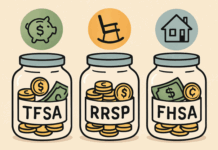Gathering customer feedback is a critical part of any CX programme, but it’s only the first step. The real value lies in what you do with that information. Closing the loop means taking meaningful action based on feedback and using insights to improve experiences continuously. It’s about letting customers know they’ve been heard and showing them that their input has led to real change. When done well, this process builds trust, strengthens loyalty, and helps teams across your business stay connected to customer needs.
To do this well, you need a structured approach. It also helps to have access to a customer experience (CX) management platform that can turn information into actionable insights. But before we get to that, let’s walk through the four key lifecycle phases of a closed-loop feedback system in order to understand how you can move from passive data collection to proactive change.
Listen: Capturing Feedback at the Right Touchpoints
Listening goes well beyond sending out surveys to your customers. It’s also about being intentional with where, when, and how you collect feedback. Each touchpoint in the customer journey, whether it’s a purchase, support interaction, or account update, is a potential moment to learn something valuable.
So, how do you narrow down touchpoints? Start by identifying which types matter most. These usually fall into three categories:
- Transactional or short-term interactions like purchases or deliveries
- Episodic or service engagements that unfold over time, like onboarding or issue resolution
- Relational or long-term customer sentiment, which is often measured quarterly or annually
To get the most accurate feedback, aim to send your survey as close to the interaction as possible. A customer is more likely to respond thoughtfully if the experience is still fresh in their mind.
Keep your surveys concise and purposeful, too. Use a mix of quantitative questions, like Net Promoter Score (NPS) or Customer Satisfaction (CSAT), alongside open-text responses that allow for elaboration. Importantly, make sure your surveys are mobile-friendly. With most users on their phones, accessibility can make or break your response rate.
Also, be mindful of survey fatigue. Bombarding customers with long, repetitive surveys does more harm than good. Instead, focus on clarity, relevance, and frequency. A short, well-timed survey is more likely to result in useful and honest answers.
Act: Responding Meaningfully to Feedback
Once you’ve received feedback, the next step is acting on it and doing so promptly. This is where you begin to close the loop.
Responding to feedback doesn’t always require large-scale changes. Often, small actions, like a follow-up call, an apology, or an offer to make things right, can shift a customer’s perception. For example, if a customer leaves a low score and mentions a missed delivery, a quick personal message acknowledging the issue and explaining the fix can go a long way.
To make this sustainable, your frontline teams need both the authority and the training to respond appropriately. It’s helpful to establish internal service-level agreements (SLAs) or response protocols that guide teams on how and when to act, especially for high-priority feedback. A customer experience management platform like Resonate CX’s can support this by automating workflows, routing feedback to the right teams, and tracking resolution times, making it easier to respond at scale without losing the personal touch.
For more complex issues, develop a clear escalation path. If the problem affects multiple customers or reveals a process breakdown, it’s worth involving teams beyond customer service, like operations or product development.
Responding promptly shows customers they’re being heard. And when done well, it can even turn detractors into promoters.
Discover: Analysing Data to Reveal Insights
With feedback coming in across different channels, the next challenge is making sense of it. This is where discovery begins.
Rather than treating each response in isolation, look at the bigger picture. What patterns are emerging? Are there recurring issues in a certain product line? Do customers in one region report higher satisfaction than others? A customer experience management platform can help you make sense of this wealth of information.
Here are some of the key features of a CX programme management solution that can support this phase:
- Omni-channel aggregation – The capability to consolidate feedback from various feedback channels.
- Real-time dashboards – These features allow you to monitor sentiment shifts and quickly spot areas that need attention.
- Text and sentiment analysis – Analysing customer sentiment is done by categorising open-text responses by themes or emotion, which then reveals tone and intent at scale.
- Segmentation tools – These features filter data by customer type, product, location, or touchpoint to see where different experiences diverge.
- Integration with operational systems – A solution that can be integrated with your CRM or helpdesk lets you overlay feedback with sales performance, issue volume, or customer tenure.
Discovery helps you move from guesswork to data-backed decision-making. It gives you the evidence needed to prioritise changes and back up recommendations to stakeholders.
Improve: Embedding Insights Into the Business
The final phase is where real transformation begins. Improvement is about turning insight into action and embedding those changes into your operations.
Once you’ve identified the root cause of an issue, work with the relevant teams to design solutions. For example, if multiple customers highlight delays in delivery, you might revise your logistics processes, adjust staffing levels, or improve your communication during fulfilment.
Sharing findings across departments allows everyone in the team to understand the customer impact of their work. You’ll also be able to create better alignment and foster a culture that values feedback this way.
Finally, track the outcomes of your changes. Did NPS scores improve after you updated the onboarding process? Are support tickets down since the introduction of a self-service hub? These metrics will help you measure progress and justify continued investment in your CX programme.
The Ever-Evolving Process of Closing the Feedback Loop
A closed-loop feedback programme isn’t something you set and forget. Rather, it’s an ongoing, evolving process. By listening attentively, acting decisively, discovering insights, and improving continuously, you create a feedback ecosystem that keeps your business aligned with what your customers need. This not only builds stronger customer relationships but also ensures your internal teams are guided by real-world data. The result? Better experiences, more loyalty, and a CX programme that delivers on its promise.
Find a Home-Based Business to Start-Up >>> Hundreds of Business Listings.















































